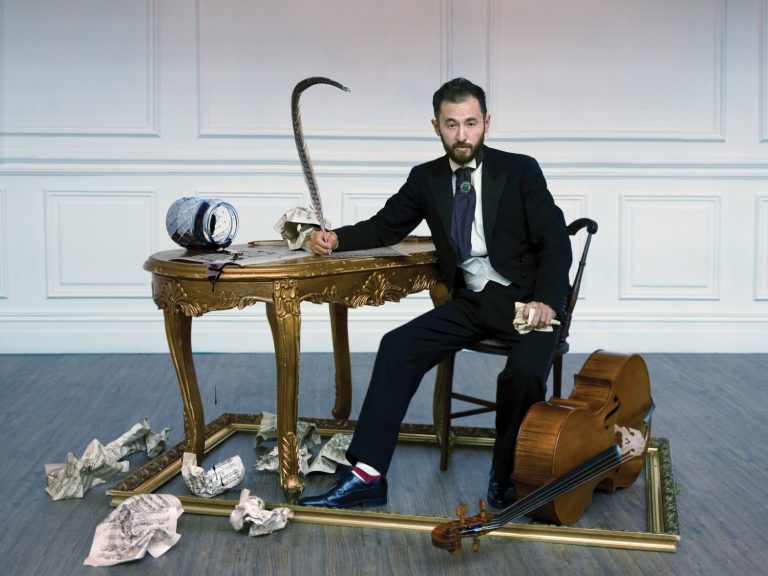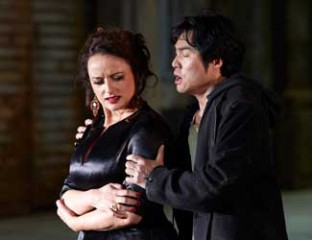Album Review: Omega Ensemble: Mozart/ Munro/ Palmer

The Sydney based Omega Ensemble has come of age with its debut album Mozart-Munro-Palmer (ABC Classics 481 4667) that gathers a triptych of works for clarinet and chamber ensemble. The album features Artistic Director David Rowden, who founded the ensemble in 2005, as the clarinet soloist anchoring the tracks with the matchless Clarinet Quintet in A major, K 581 by Mozart. This is paired with two new Australian works, Ian Munro’s (b 1963) Songs from the Bush (2009) and George Palmer’s (b 1947) It Takes Two (2008), written for Rowden with Omega Ensemble and guest clarinetist Dimitri Ashkenazy.
There must surely be scores of recordings of Mozart’s Clarinet Quintet. Rowden and the Omega Ensemble give a performance that is distinctive in sound and interpretation. One reason is the fact that Rowden performs on a bassett clarinet, a soprano clarinet whose range is extended downwards, and the instrument for which Mozart wrote this piece and many others. After falling out of favour, its revival with modern keys, was led in Prague in the 1950s by the Czech clarinetist, musicologist and composer Jiří Kratochvíl.
Rowden and the ensemble establish their credentials in the performance of the classical style with Mozart’s mainstay of the clarinet repertoire. Rowden delivers a creamy legato that prevails through the melodies and arpeggiated passages. The strings provide a dulcet foil contrasting the blown with the bowed as the thematic material is passed around. The second movement (Larghetto) is played with a serene beauty and the third movement (Menuetto and Trios) conveys all the stately elegance of the era. The final movement is full of light although it contains a note of anguish as the viola takes the spotlight the minor key of the third variation.
It is a joyful performance of this luminous work, yet, a touch of the bittersweet acknowledges the paradox that it was written during one of the most difficult times in Mozart’s life as he faced both financial and personal crises. Writing to his friend, benefactor and fellow Mason, Michael Puchberg, that year (1789), he entreats “My God, I could not wish my worst enemy on my present case! And if you…forsake me….I and my poor sick wife and child are all lost together!” Mozart goes on to declare “I cannot make any money whatever I do,” and begs a loan of 500 florins which he will replay at a rate of 10 florins a month. He was indeed plumbing the depths of desperation as he wrote this piece.
Munro’s Songs from the Bush crosses cultural divides drawing on both Australian folk material and Indigenous music. The composer describes using ideas close their original form, which are then, “developed, re-imagined and re-combined with other tunes and motifs,” creating “a link and a sympathy between the two cultures in ways that words can struggle to, and history might tend to deny.”
Songs from the Bush is a three-movement clarinet quintet commissioned for Musica Viva that clocks in at just over 18 minutes. The first movement (Country Dance) is played with a pastoral charm. Rowden could easily be the piper in the field at play with the sounds of nature. We’re led to into wonderment at the vastness of the universe in the second movement Campfire & Night Sky; the strings present the opening bars of the third movement, Drover’s Lament in the style of a jig before clarinet and strings enter into a dialogue that imitates and counters, while a rhythmic percussive effect throbs in the distance as the violin soars and the clarinet ebbs to an echo.
George Palmer’s It Takes Two is a three-movement piece, written for Rowden and Ashkenazy, described as a Concerto for Two Clarinets, celebrating friendship and love. The ensemble for this piece extends to 9 musicians, comprising violinists Andrew Haveron (Concertmaster of the Sydney Symphony Orchestra) and Ike See, violist Neil Thompson, cellist Paul Stender, double bassist Jaan Pallandi, flautist Lisa Osmialowski, oboeist Josh Oates, bassoonists Mel Woodroffe and Ben Hoadley (in turn), and horn player Michael Dixon.
The two solo clarinets are well matched in the first movement (Adagio – allegro con spirito) as they engage in a plaintive dialogue. The conversation turns into a more animated repartee and the strings join in before the conversation ebbs and flows again. The ensemble delivers a lusciously romantic portrait of the second movement (Lento arioso) full of ‘wistfulness and longing,’ with instrumental effects and the structure of the piece mirroring the narrative. The clarinets pursue each other through the third movement, a bubbly Molto vivace that motors along with syncopated, jazzy dance rhythms.
It is an impressive debut recording from this versatile ensemble, that combines both the old and the new.
Shamistha de Soysa for SoundsLikeSydney©







